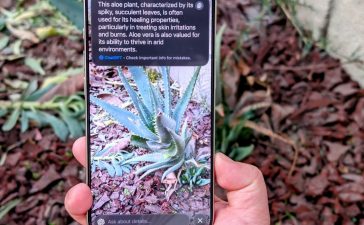Back at E3 2017, I had a plan. The annual convention always had a wide range of game developers in attendance, offering reporters like me the opportunity to talk to prominent folks from all over the world. I decided it would be the ideal place to chat with Japanese creatives about the then-resurgent mood surrounding the country’s video game efforts. First on my list was Toshihiro Nagoshi, the infamously prickly creator of the Yakuza series. In an attempt to break the ice, I asked the stylish director where he bought his shoes. He replied, very simply — and in a very serious tone — “very expensive.” The only words of English he spoke during our entire conversation.
Now that E3 is dead — for real this time — I can’t help but think back on these kinds of memories. In a lot of ways, covering E3 as a member of the press was a nightmare; the lines were too long, as were the hours spent scouring the show floor, running from appointment to appointment (before going back and filing stories from a hotel room). It was big and loud and exhausting — seemingly not a great place to have interesting conversations that could become insightful articles. And yet, the sheer overwhelming energy of E3, with so many developers all crammed into one convention center for several days at a time, meant that it was also a chance to fully immerse myself in what I loved most: writing about video games.
There wasn’t and still isn’t anything quite like it — and for that reason, I’m really going to miss E3. Shows like Summer Game Fest have popped up to fill in E3’s role, and publishers continue to take matters into their own hands with regular livestreams. But these are online events first and foremost. They don’t have the mass of personalities in one location that E3 did. They’re better for disseminating news and trailers, but you miss out on getting negged by iconic game designers like Nagoshi.
E3 had existed since the ’90s, which means that, as a kid growing up reading EGM and Gamepro, it was a place I just had to go one day. In a pre-internet age, before games were announced via tweets and thousands of Mother 3 fans could be whipped into a frenzy by the words “Nintendo Direct,” it was a place where attendees could glimpse the future of gaming in a way that wasn’t otherwise possible. And those attendees were relatively limited. It was a show for press and people working in the industry, something that only further enhanced its near-mythical status.
I finally got my chance to attend in 2014 as a fledgling reporter here at The Verge. The Los Angeles Convention Center was vast and intimidating. There were bright lights and sprawling booths filled with statues of zombies and robots and Sonic the Hedgehog. But over the years, I figured out how to navigate the physical space and the deluge of meetings and appointments. In fact, I became The Verge’s de facto E3 schedule master, building everyone’s calendar as if I were playing a game of Tetris.
And I got pretty good at squeezing as much out of the trade show as I could. Conversations with former Nintendo of America president Reggie Fils-Aimé and current head of Xbox Phil Spencer about the state of the business became an annual occurrence. Even more exciting, though, was to be in a press conference where something cool was shown and then not just play it but have the chance to speak to the minds behind it right after. There was Cory Barlog, Koji Igarashi, Yoshio Sakamoto, Takashi Tezuka, the duo heading up Monster Hunter World, and many others.
And many of these meetings came with fun stories that never made it on the page. Like the time when, for some reason, I decided to ask two veteran designers what Gooigi would taste like. The entire room — not just my interview subjects, but PR reps and translators — erupted in laughter. (This would turn out to be a surprisingly prescient question.) Or when I was whisked away to a secret room at an Ubisoft event to see a very early version of Beyond Good and Evil 2 and hear Michel Ancel emphasize, “We now really believe that we’re going to make this game.” (Ancel has since retired from game development and, six years later, the sequel has yet to be released.)
Then, there was the time when I asked Masahiro Sakurai, the beloved director of the Smash Bros. series, what kind of reaction he got after telling the development team how big of a game Super Smash Bros. Ultimate would be. At first, he didn’t have a response for me at all… but then a fellow developer who happened to be in the room chimed in to say that he remembered everyone getting very quiet. Finally, Sakurai chimed in with an excellent line: “From where I stood, all I heard was dead silence.” It made the piece I was writing.
It’s not like these moments could never happen without E3. There are still in-person events like GDC, and the industry has become pretty accustomed to virtual interviews. But there’s something to say for not just the scale but the concentration of E3 — a week or so where you don’t have time to do anything but think and talk about games. I won’t miss how tired it made me, but I’ll certainly miss the stories.








